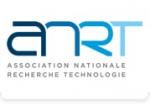Development and characterization of CrSiN-based thin films by DC magnetron sputtering and HIPIMS
| ABG-134122 | Stage master 2 / Ingénieur | 6 mois | 600 euros |
| 31/10/2025 |
- Sciences de l’ingénieur
- Matériaux
- Physique
Établissement recruteur
Site web :
Grand établissement technologique, Arts et Métiers compte 14 sites. Arts et Métiers a pour missions principales la formation d’ingénieurs et cadres de l’industrie, la recherche. Devenir le grand établissement de technologie français, au service des entreprises : telle est l’ambition d’Arts et Métiers. Dans le cadre du plan stratégique 2022-2027, de nombreux projets ont été engagés pour faire de chaque diplômé Arts et Métiers un acteur essentiel au service des futurs leaders et des entreprises qui feront la France industrielle de 2030.
Arts et Métiers is a leading French technological institution with a national presence across 14 campuses. Its core missions are the training of engineers and industrial executives, and the advancement of applied research in close collaboration with industry. The institution aspires to become France’s premier technological establishment, serving the needs of companies and industrial innovation.
As part of its 2022–2027 strategic plan, Arts et Métiers has launched numerous initiatives aimed at ensuring that each graduate becomes a key contributor to the success of future industrial leaders and to the development of the French industrial landscape by 2030.
Description
Cette étude se fait dans le cadre du projet ANR PRCE POLARISS « develoPement of tOoLs for cryogenic mAchining - pRogressIon to a SuStainable machining ». Les partenaires de cette étude sont ici le laboratoire LaBoMaP de l’ENSAM de Cluny (71 250) et la société Nano&MicroPVD (Etupes 25 460).
Les préoccupations environnementales et les coûts des fluides de lubrifiants utilisés dans les opérations d'usinage entraînent un intérêt industriel croissant pour les fluides cryogéniques (N2 liquide, CO2 liquide) pour les substituer aux lubrifiants classiques. Cependant, les outils de coupe existants pour l’usinage cryogénique ont montré une grande dispersion de l'usure diminuant ainsi leur durée de vie.
Le projet POLARISS vise donc à développer la prochaine génération d'outils coupants pour l'usinage cryogénique (fraisage, tournage et perçage). L'objectif est d'augmenter les performances de ces outils en améliorant leurs propriétés chimiques/mécaniques/physiques/thermiques. Des revêtements durs de CrSiN par PVD seront élaborés et étudiés pour fournir des matériaux ayant une stabilité thermique et une résistance à l’usure élevées.
Les travaux attendus dans le cadre de ce stage peuvent se résumer comme suit :
• État de l’art sur la synthèse de CrSiN par pulvérisation magnétron DC et HIPIMS
• Développement de couches dures de CrSiN par copulvérisation en utilisant la technique DCMS (Direct Current Magnetron Sputtering) au LaBoMaP avec deux cibles de pulvérisation : Cr et Si.
• Développement de couches dures de CrSiN en utilisant la technique HIPIMS (High Power Impulsed Magnetron Sputtering) chez Nano&MicroPVD avec une cible composée de CrSi (à 7-8 % at. Si).
• Des caractérisations chimiques / mécaniques seront réalisées pour comparer les revêtements de CrSiN faits par les deux procédés pré-cités.
Les revêtements de CrSiN seront ainsi élaborés dans une machine semi-industrielle au LaBoMaP et dans une machine industrielle de Nano&MicroPVD.
Ces couches seront déposées sur différents substrats (silicium, carbure de tungstène). Il s’agira d’optimiser les couches de CrSiN afin d’obtenir des couches adhérentes, dures, résistantes à l’usure, stables thermiquement et avec une conductivité thermique faible pour l’étude au LaBoMaP.
Chez Nano&MicroPVD le taux de Si sera fixe. Il s’agira de faire varier la puissance appliquée sur la cible d’alliage, le mélange argon et gaz réactif, la pression de travail, la tension de polarisation du substrat, le tout conduisant à une optimisation du temps de dépôt.
Des caractérisations physico-chimiques, structurales, tribologiques et mécaniques des revêtements obtenus seront réalisées au LaBoMaP en collaboration avec le LASMIS de l’antenne de Nogent de l’UTT (partenaire du projet ANR POLARISS). Des caractérisations standards (DRX, MEB+EDS et WDS, XPS, etc.) et mécaniques (épaisseur, morphologie, tribométrie, profilométrie optique, contrainte, nanoindentation, scratch-test) seront ainsi réalisées soit au LaBoMaP, soit chez l’un de ses partenaires académiques ou via des prestations de service.
Ce projet de master sera financé par l’ANR POLARISS (gratification, fonctionnement, consommables, etc.) et déplacements du/de la stagiaire recruté(e).
This study is conducted within the framework of the ANR PRCE POLARISS project “develoPment of tOoLs for cryogenic mAchining – pRogressIon to a SuStainable machining.”
The partners involved in this work are the LaBoMaP laboratory of ENSAM in Cluny (71 250) and the company Nano&MicroPVD (Etupes 25 460).
Environmental concerns and the high costs of lubricating fluids used in machining operations are driving growing industrial interest in cryogenic fluids (liquid N₂, liquid CO₂) as substitutes for conventional lubricants. However, existing cutting tools for cryogenic machining have shown significant variability in wear behavior, thereby reducing their service life.
The POLARISS project therefore aims to develop the next generation of cutting tools for cryogenic machining (milling, turning, and drilling). The objective is to enhance the performance of these tools by improving their chemical, mechanical, physical, and thermal properties. Hard CrSiN coatings produced by PVD will be developed and investigated in order to provide materials with high thermal stability and wear resistance.
The expected work within the framework of this internship can be summarized as follows:
• State of the art on the synthesis of CrSiN by DC magnetron sputtering and HIPIMS.
• Development of hard CrSiN coatings by co-sputtering using the DCMS (Direct Current Magnetron Sputtering) technique at LaBoMaP with two sputtering targets: Cr and Si.
• Development of hard CrSiN coatings using the HIPIMS (High Power Impulse Magnetron Sputtering) technique at Nano&MicroPVD with a composite CrSi target (7–8 at.% Si).
• Chemical and mechanical characterizations will be carried out to compare the CrSiN coatings produced by the two aforementioned processes.
The CrSiN coatings will thus be developed in a semi-industrial machine at LaBoMaP and in an industrial machine at Nano&MicroPVD.
These coatings will be deposited on different substrates (silicon, tungsten carbide). The aim will be to optimize the CrSiN coatings in order to obtain layers that are adherent, hard, wear-resistant, thermally stable, and with low thermal conductivity for the study at LaBoMaP. At Nano&MicroPVD, the Si content will be fixed. The optimization will focus on varying the power applied to the alloy target, the argon/reactive gas mixture, the working pressure, and the substrate bias voltage, all of which will contribute to the optimization of the deposition time.
Physicochemical, structural, tribological, and mechanical characterizations of the coatings obtained will be carried out at LaBoMaP in collaboration with LASMIS at the Nogent antenna of UTT (partner of the ANR POLARISS project). Standard characterizations (XRD, SEM+EDS and WDS, XPS, etc.) as well as mechanical analyses (thickness, morphology, tribometry, optical profilometry, stress, nanoindentation, scratch-test) will thus be performed either at LaBoMaP, at one of its academic partners, or through external service providers.
This Master’s project will be funded by ANR POLARISS (stipend, operating expenses, consumables, etc.) and will cover the travel costs of the recruited student.
Profil
Formation requise de l'étudiant :
• Des connaissances en science des matériaux.
• Des connaissances/compétences en dépôts PVD et en techniques de caractérisations mécaniques.
• Capacité à travailler de manière autonome, à planifier et à exécuter des tâches et à travailler en groupe.
• Bonnes compétences en communication en anglais et/ou en français, tant à l'écrit qu'à l'oral.
Required background of the student:
• Knowledge in materials science.
• Knowledge/skills in PVD deposition and mechanical characterization techniques.
• Ability to work independently, to plan and carry out tasks, and to work in a team.
• Good communication skills in English and/or French, both written and oral.
Prise de fonction
Vous avez déjà un compte ?
Nouvel utilisateur ?
Vous souhaitez recevoir nos infolettres ?
Découvrez nos adhérents
 ASNR - Autorité de sûreté nucléaire et de radioprotection - Siège
ASNR - Autorité de sûreté nucléaire et de radioprotection - Siège  Ifremer
Ifremer  Tecknowmetrix
Tecknowmetrix  Nokia Bell Labs France
Nokia Bell Labs France  ADEME
ADEME  CESI
CESI  MabDesign
MabDesign  CASDEN
CASDEN  Généthon
Généthon  Groupe AFNOR - Association française de normalisation
Groupe AFNOR - Association française de normalisation  ANRT
ANRT  MabDesign
MabDesign  SUEZ
SUEZ  Laboratoire National de Métrologie et d'Essais - LNE
Laboratoire National de Métrologie et d'Essais - LNE  Aérocentre, Pôle d'excellence régional
Aérocentre, Pôle d'excellence régional  PhDOOC
PhDOOC  TotalEnergies
TotalEnergies  ONERA - The French Aerospace Lab
ONERA - The French Aerospace Lab  Institut Sup'biotech de Paris
Institut Sup'biotech de Paris

